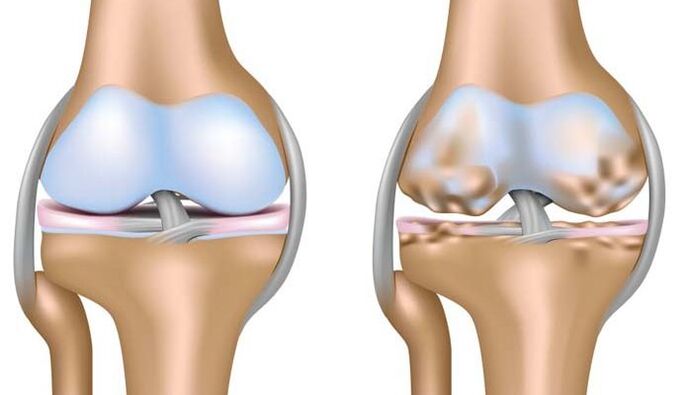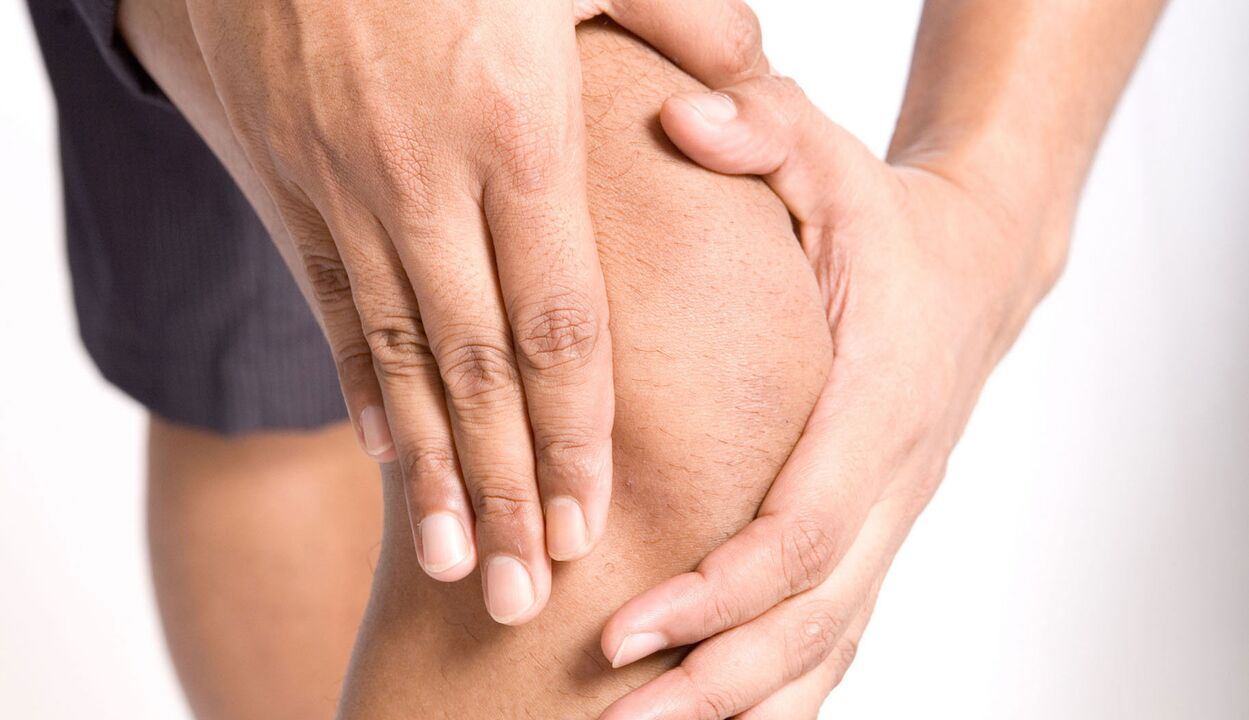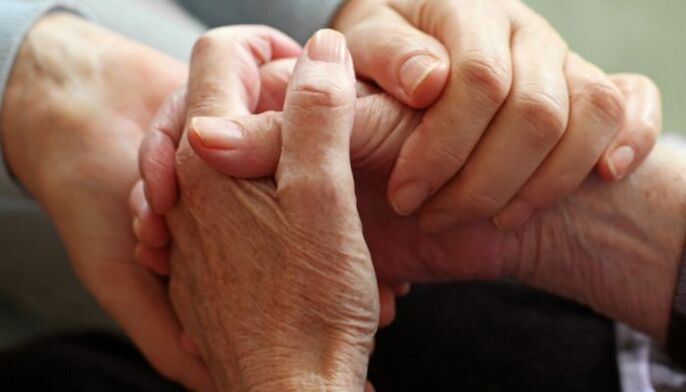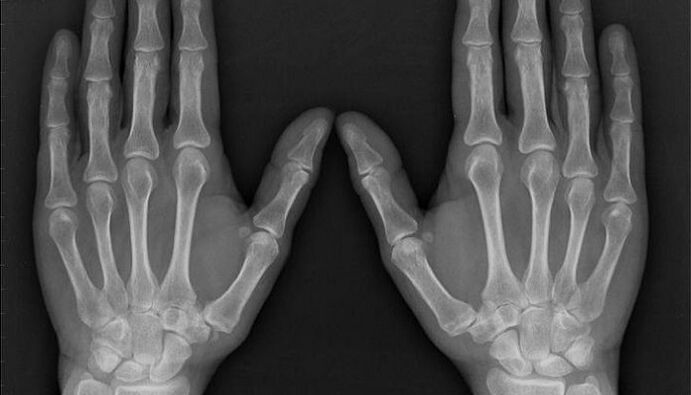Arthritis and arthritis are diseases characterized by pathological changes in the joints, however, the difference between arthritis and arthrosis is important. To understand the difference between arthritis and arthrosis, it is necessary to consider the etiological factors, pathogenesis, symptoms of arthritis and arthrosis. The treatment of arthrosis and arthritis also has different approaches.
What is arthritis, arthrosis? How are joint lesions manifested in arthritis and arthrosis, what is the difference? In arthrosis and arthritis, the differences are due to the mechanism of pathological changes.
Treatment of arthrosis and arthritis is long-term, with many components. Often, as a result of premature treatment, arthritis and arthrosis can be considered as consecutive stages of the pathological process. After understanding what arthritis and arthrosis are, we will define the differences between arthrosis and arthritis.
Arthritis, classification
Arthritis - due to inflammatory changes, combines both the pathology of the joints themselves, and is a symptom of other diseases that occur with their loss. The way to treat arthritis depends on determining the cause that caused the inflammatory process.
According to the etiological factor:
- Primary - rheumatoid, rheumatoid arthritis, ankylosing spondylitis, Still's disease, other.
- Secondary - complications of an infectious, non-infectious process (reactive with chlamydial infection, hepatitis, diseases of the gastrointestinal tract, septic lesions).
From the number of nodes affected:
- Monoarthritis - with the loss of a single joint.
- Polyarthrosis – when a group of joints is affected.
From the nature of the course of the disease:
- Acute arthritis - with a vivid clinical picture of inflammatory changes in the connective tissue of the joint.
- Subacute - an intermediate option, the stage of resolution of an acute condition.
- Chronic arthritis - with an obliterated clinical picture, a slow course, periods of relaxation and aggravation.
Osteoarthritis, classification

Deformative osteoarthritis, rheumatoid arthritis or arthrosis is a disease based on degenerative changes associated with the destruction of all joint structures, cartilage, ligaments, muscles, tendons and bones. This is the main difference between joint arthrosis and arthritis, leading to irreversible deformations of the affected articular surfaces, dysfunction and disability of the patient.
- Idiopathic - no known cause. The pathological process is based on an autoimmune damage mechanism (primary rheumatoid arthrosis in young patients).
- Secondary osteoarthritis is the result of metabolic disorders, trauma and inflammation. For example, rheumatoid arthritis that appeared after suffering from rheumatoid arthritis.
Arthritis, causes
The risk factors are:
- Violation of metabolic processes in the body.
- Hereditary predisposition factor.
- Infectious diseases.
- Conditions of lack of immunity, the presence of autoimmune diseases, allergic manifestations.
- Increased load on the musculoskeletal system due to professional activity, traumatic component.
Arthrosis, causes
Risk factors for the development of osteoarthritis are:
- Age. Osteoarthritis is a disease of the elderly, with the exception of rheumatoid arthritis, which appears in adolescence. According to WHO statistics, about 10% of the world's population suffers from arthropathies.
- Physical overload, injury, excess weight, which increases the load on the joints. Large joints suffer more than others: hip - coxarthrosis, knee - gonarthrosis.
- Hereditary factor: features of metabolic processes, cartilage tissue structure.
- Advancement of inflammatory processes without proper therapy.
Arthritis, symptoms

Regardless of the cause of the disease, the signs of the disease have a similar clinical picture in the acute phase of the process and during the worsening period of the chronic course of the disease.
- Pain is the first symptom. It has a different intensity, most often it is permanent, it does not depend on physical activity.
- Hyperemia of the skin of the joint area, local increase in temperature (the joint area becomes hot to the touch), pronounced edema.
- The presence of effusion (fluid) in the cavity of the articular bag. Microbiological, cytological examination of fluid from the inflamed cavity is important for diagnosis, establishing the causative factor. The knee joints are most often affected. The presence of an inflammatory nature of the fluid inside the joint capsule is the difference between arthritis and arthrosis of the knee joint.
- Extra-articular manifestations of the underlying disease: fever, vascular damage - vasculitis, heart valves, lung diseases - alveolitis, pneumonia, kidney damage - nephritis, skin manifestations, hematological changes - anemia, increase in the number of peripheral blood platelets.
- Limitation of range of motion in joints, dysfunction.
Osteoarthritis, symptoms

Symptoms of arthrosis are caused by prolonged malnutrition, blood supply to the cartilage plate. Cartilage loses its elasticity, becomes thinner, while growths - osteophytes - are formed from bone tissue inside the joint cavity, irreversibly deforming the articular surface, disrupting functionality, causing pain and significantly limiting mobility.
- Pain. The onset of the disease is characterized by moderate intensity, pain, constant pain. The strengthening of the pain syndrome is accompanied by an increase in dystrophic changes in the cartilage and deformations. The pain can change, be temporary: from stiffness in the morning, to constant and decrease during the day. A rapid and intense increase in pain is a bad prognostic sign.
- visible deformation.
- Functional disorders: bending, stretching.
- Characteristic jump when moving.
- The development of joint immobility leads to disability of patients.
Osteochondrosis is a common pathological condition of the spine, based on the same changes in cartilage as in arthrosis.
Diagnosing

The diagnosis of arthritis and arthrosis aims to identify the underlying cause of the disease, determine the degree of activity of the process, evaluate the prognosis and effectiveness of the treatment, and timely diagnose the complications of the disease.
The complex of diagnostic tests includes general clinical laboratory tests, instrumental studies of the liver, kidneys, X-ray diagnostic measures, microscopic, bacteriological studies.
- Distinctive features of arthritis of various etiologies are: an increase in the sedimentation rate of erythrocytes, an increase in the level of leukocytes in the peripheral blood, which makes it possible to determine the severity of inflammatory changes, an increase in C-reactive protein in the plasmaof blood. - an important diagnostic laboratory test.
- X-ray examination allows you to see a characteristic picture for inflammatory articular surfaces.
- MRI is the most informative method for detecting inflammatory changes within the joint capsule.
- Doppler ultrasonography is used.
- In difficult cases, it is possible to perform arthroscopy for the purpose of differential diagnosis and treatment.
A very informative method that allows you to make a diagnosis, distinguish arthrosis or arthritis, is an X-ray examination. Depending on the identified changes, the degree of deformation of the intra-articular cartilage and the width of the articular space, four degrees of pathological changes are distinguishedin arthrosis.
Arthritis, principles of treatment

Arthritis treatment is long-term, the main goal is to cure the disease that caused inflammatory changes in the joint capsule or achieve a long-term course without relapse of the disease, prevent the development of irreversible changes, deformations, improve quality. and life expectancy of patients.
For treatment are widely used:
- Medical methods of influence. Depending on the etiological factor, the following are used: antibacterial, non-steroidal anti-inflammatory drugs, hormones, the introduction of anti-inflammatory drugs directly into the joint cavity, in severe forms of rheumatic disease, chemotherapeutic drugs are prescribed.
- Non-drug treatment. An important role is played by physiotherapy exercises, following a diet, a healthy lifestyle - quitting smoking, alcohol, physiotherapy, timely orthopedic care and correction of existing disorders, prevention of exacerbations of accompanying diseases.
- The surgical method is not the method of choice in treatment. This is a tool to help patients in particularly difficult cases - with the development of severe complications, severe pain syndrome, ineffectiveness of the first two methods of treatment. There are certain restrictions and indications for appointment.
Osteoarthritis, treatment

Rheumatoid arthrosis is treated in a complex, includes:
- Non-drug therapy. In rheumatoid arthritis, treatment includes physical therapy exercises, physiotherapy, protective regimen, load reduction, diet, weight loss.
- Medical treatment is associated with pain relief. Most often, non-steroidal anti-inflammatory drugs, hormonal drugs are prescribed.
- Surgical treatment methods: plastic, arthrodesis, prosthesis of large joints (knee, thigh).
Prevention of irritations
Due to the possibility of a prolonged, chronic course of the disease, the development of complications, regardless of the cause of their occurrence, patients are subject to continuous or long-term observation, rehabilitation measures designed taking into account individual characteristics and the nature of the disease.
Important preventive values are:
- Treatment of inflammatory diseases of the musculoskeletal system, a complex of rehabilitation measures after injuries.
- Limitation of loads, a healthy lifestyle, proper rational nutrition as a factor in the fight against excess weight.
- Timely orthopedic correction of bone deformities acquired during life.
Remember, at the first sign of trouble, it is important to contact a specialist at the right time. Late start of treatment increases the risk of possible negative consequences of the disease.



















